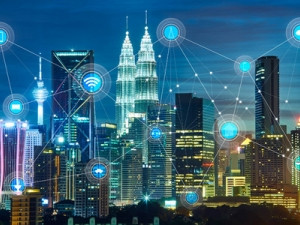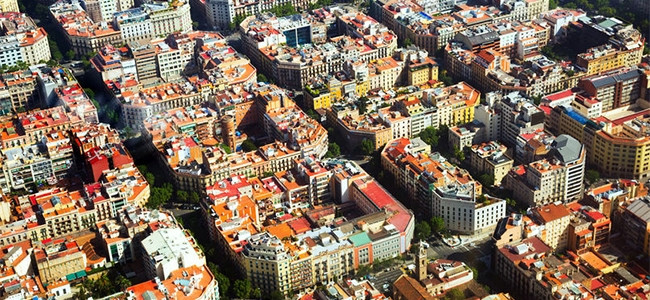
The best smart cities of the future will not be those that have the best technology, but those that collaborate with residents to create spaces and movement though spaces that enhance happiness levels instead of increasing stress.
This is the opinion of Jorge Saraiva, smart cities adviser for the European Union, who spoke at GITEX, the annual IT conference taking place in Dubai, United Arab Emirates (UAE).
Cities are fast becoming the home of choice for people across the globe. Saraiva says it is predicted that by 2050, 6.4 billion people will live in cities. And there is increasing pressure on cities to become 'smart' as the world quickly moves into the digital revolution.
However, he says: "Being smart is not always about the tech that needs to be deployed; this can often come after."
Futuristic cities are often portrayed with overarching intricate highways, flying vehicles and flashing lights. While elements of this picture may come true, Saraiva says to get to this point, successful future smart cities first need to rely on the design of early cities.
He gave the example of MIT professor Kent Larson being asked to advise on smart cities for the Hollywood blockbuster Minority Report. Larson said he could not help them because they would not find his predictions 'sexy' enough.
Larson predicted that future cities will need to resemble early cities that were divided into smaller communities where people could easily walk from one side to the other, and be able to reach everything they need on a daily basis.
Saraiva says at the moment, cities are designed around the car, and residents spend an inordinate amount of time in them driving to work, their children's school and the grocery store. He says this design is unsustainable.

According to Saraiva, cities with very large populations will be divided into smaller self-contained communities where the residents will not have to leave and travel long distances to complete everyday tasks. He says cities like London and Barcelona already have this type of city structure.
The well-being of a city's residents will become increasingly important as more people move to urban areas. "Cities should be places where people are happy, because people are going to be moving towards them no matter what."
Happiness as a city indicator
City planners should not get caught up in the technology, says Saraiva. While connection is important to run what is to come, if cities are not redesigned to cope with the huge influx of people expected, they will experience high levels of citizen unhappiness.
He says happiness is important as a city indicator because various reports show high levels of happiness increase individual and community resilience, citizens live up to 15 years longer and are more productive at work, which drives economic growth.
Cities will also start competing against other cities to attract the best citizens; it will no longer be about countries competing against each other.
To create a space where city dwellers are happy, planners need to study what people already do and how they move and them improve those places, he notes. Citizens should also be actively involved in the process.
He says cities should not be built from the ground up, expecting that when done, people will flock to them. There are examples of governments doing this in India, China and UAE cities, and they are now ghost towns.
People who live in the space normally have solutions that are better suited and will require less technology deployment. He says in Brixton, London, there used to be a parking garage in the central district that deteriorated over time and became seedy.
To find a solution, planners asked the community what it would do with the space, keeping in mind the solution needed to be affordable and temporary - because if it did not work, they wanted to be able to easily take it down and try again.

The idea was to fill the lot with shipping containers and put restaurants in them - the only requirement was that each restaurant had to serve different types of food from the huge local community of expats the area had attracted.
Brixton Pop still stands today and is an example of how a community project can transform an area and raise local happiness levels.
Saraiva says simplicity is normally the answer, even with technology.
In Brazil, a transportation company developed a complicated application that would let passengers know when buses would arrive. However, the application followed a set schedule and in Brazil this was not always reliable.
Unknown to the company, one of its bus drivers had already solved this problem by adding all his regular passengers to a WhatsApp group that he would update in real-time when he was going to be late due to traffic or bad weather.
Share